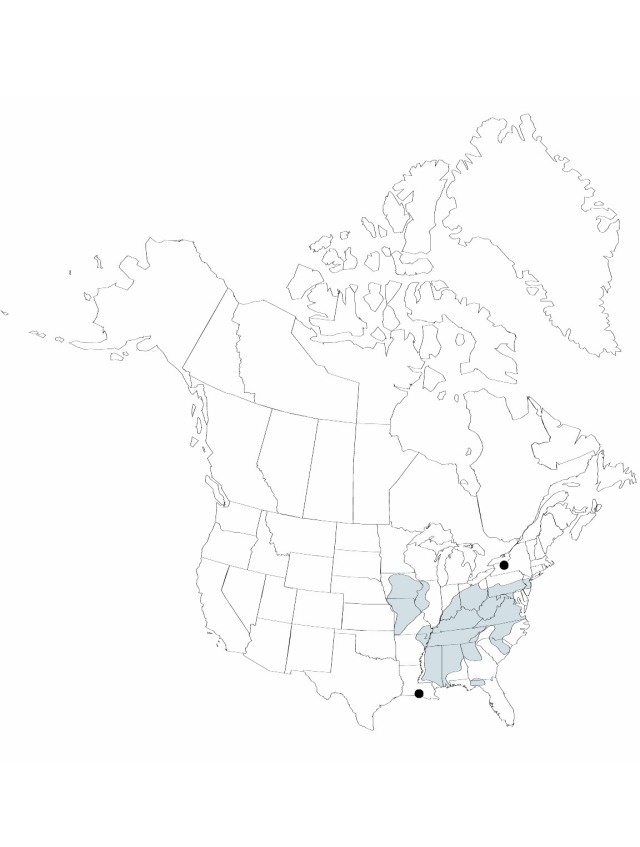Sagittaria australis
Flora of the Southeastern United States 45. 1903.
Herbs, perennial, to 130 cm; rhizomes absent; stolons present; corms present. Leaves emersed; petiole 5-winged, 19–85 cm; blade sagittate, 3–19 × 2.5–11 cm, basal lobes ± equal to remainder of blade. Inflorescences racemes, of 5–12 whorls, emersed, 10–29 × 3–5 cm; peduncles 25–105 cm; bracts distinct or if connate, then less than ¼ total length, lanceolate, 7–30 mm, papery, not papillose; fruiting pedicels spreading to ascending, cylindric, 0.3–2.3 cm. Flowers to 3 cm diam.; sepals recurved to spreading, not enclosing flower or fruiting head; filaments cylindric, longer than anthers, glabrous; pistillate pedicellate, without ring of sterile stamens. Fruiting heads 1–2.2 cm diam.; achenes obovoid, without abaxial keel, 2.1–3.2 × 1.4–2.3 mm, beaked; faces not tuberculate, wings 0–2, ± entire, glands absent; beak lateral, strongly recurved, 4–17 mm. 2n = 22.
Phenology: Flowering summer–early fall (Jul–Oct).
Habitat: Slightly basic to slightly acidic ponds, lakes, and swamps
Elevation: 1–300 m
Distribution

Ala., Ark., Fla., Ga., Ill., Ind., Iowa, Ky., La., Md., Miss., Mo., N.J., N.Y., N.C., Ohio, Pa., S.C., Tenn., Va., W.Va.
Discussion
The name Sagittaria longirostra (Micheli) J. G. Smith has been misapplied to S. australis (J. G. Smith) Small (E. O. Beal et al. 1980).